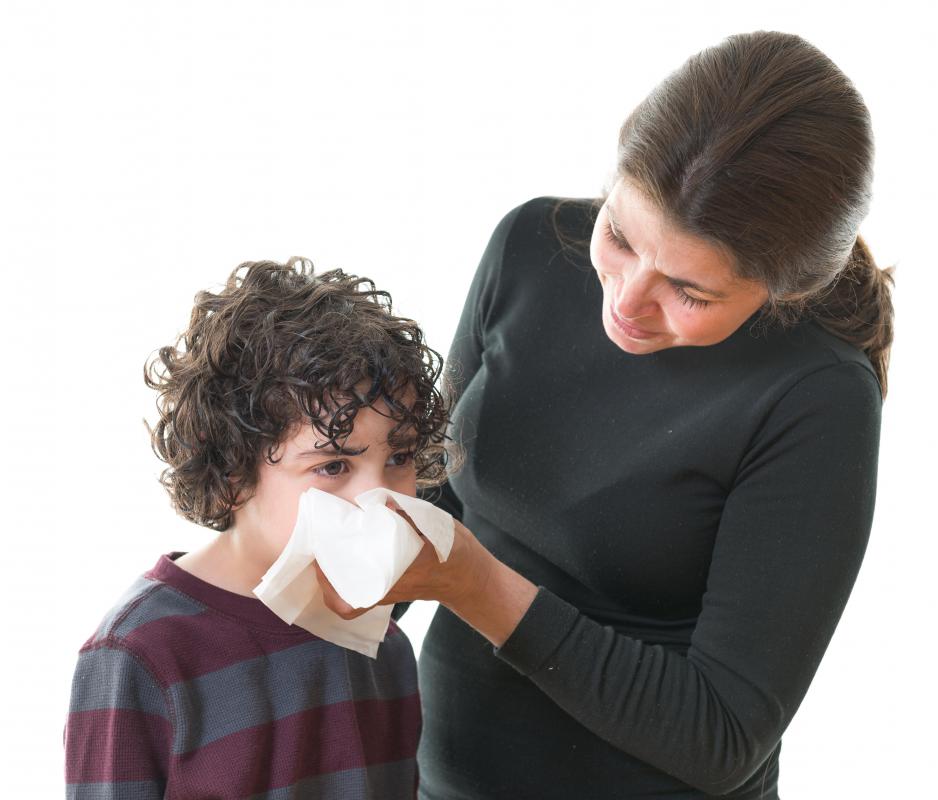At TheHealthBoard, we're committed to delivering accurate, trustworthy information. Our expert-authored content is rigorously fact-checked and sourced from credible authorities. Discover how we uphold the highest standards in providing you with reliable knowledge.
What is Active Immunity?
Active immunity is a scientific term used to describe the process through which a being, typically a human or an animal, builds up a specific resistance to a harmful substance. There are usually two ways this can happen. First is natural exposure, like when a person catches a cold or encounters a certain bacteria in the environment. Vaccinations can also cause an active immune response through artificial means. In either case the body’s immune system creates a targeted response to the harmful substance by first identifying it and then building up antibodies against it, both of which enable the body to fight it off in the future.
How It’s Triggered

In people and most animals, active immunity is one of the primary purposes of the immune system. Natural immunity happens when a person is exposed to harmful microbes in the environment, which is in most cases accidental. Once these microbes penetrate the skin, the mucous membranes, or any of the body’s other primary defenses, the body begins a staged response, usually by triggering the release of B-cells to produce antibodies designed to fight the invasion.

Artificial immunity generates the same basic response, but it is usually intentional. Instead of a person encountering a microbe by chance, he or she is usually injected with it, as in a vaccine. Vaccines typically contain dead, weakened, or incomplete and harmless versions of a threatening microbe. When the immune system encounters the microbe it will begin the process of active immune response, but with the key difference that people don’t usually get sick. In this way, when and if people are ever exposed to live strains of the microbe again, as would happen in a natural setting, their bodies will be able to fight it off before it can do any damage.
Basic Process

The active immune system usually kicks in through a series of chain reactions. All invading microbes have certain proteins on their surfaces called antigens. When a specialized cell of the immune system called a phagocyte eats the microbe, it delivers the antigen to a white blood cell called a helper T cell. Helper T cells then activate other cells of the immune system, which together help to destroy the infection. This process also creates memory cells — cells that become activated to fight in the event the same microbe strikes again.
Primary Types

Active immunity can be either cell-mediated or humoral. In cell-mediated immunity, cells such as cytotoxic T cells hunt down and kill specific invaders by using the antigens on their cell membranes as identifying markers. With humoral immunity, B cells produce antibodies that bind to specific invaders, again using the antigens on their cell membranes as identifying markers. These antibodies make it easier for white blood cells to either destroy the microbes or neutralize their negative effects. In both natural and artificial forms, the body produces all the cells and materials to perform both cell-mediated and humoral immune functions.
Why It Happens
This sort of immunity is a really important evolutionary feature that helps sustain life and perpetuate survival. Diseases and bacteria are some of the main causes of human, animal, and plant demise, and the immune response is one way in which microbes are at a disadvantage. Diseases lose some of their power when the hosts they’re trying to infect are building up their own defensive response.
Understanding Passive and Innate Immunity
The process is described as “active” in large part because the body must actively react to the presence of microbes in its internal environment. The opposite is called passive immunity. In passive immunity, the materials necessary to fight off infection are produced outside of the body and are then delivered to another person. This can happen naturally, such as a child receiving antibodies as a developing fetus or later from its mother’s milk, or artificially, as when a person receives an injection of pre-made antibodies.
It’s also important to understand that "innate" is different from "active." Active immunity is a subset of adaptive immunity, in which the body attacks specific invaders. Innate immunity, on the other hand, defends the body against invaders without attacking specific types. For example, lymphocytes such as neutrophils, macrophages, and natural killer cells attack foreign microbes regardless of what antigen they have on their cell membrane.
AS FEATURED ON:
AS FEATURED ON:














Discussion Comments
It is very interesting, but why does immunity exist??
Is herd immunity a form of active immunity? I know that it is an acquired immunity, since it must be created by a vaccine rather than just occurring naturally, but does that make it active or passive?
Thanks for this article -- you have no idea how hard it is to find a specific active immunity definition like this article provides.
All the other ones are just crazy vague or either stuffed so full of medical jargon that you can't figure out what they're saying in the first place.
This article was both clear and concise, and very informative to boot. Nicely done.
How would you say that active immunity is related to the difference between cell mediated immunity and humoral immunity?
For example, does active cell mediated immunity work differently than active humoral immunity, and if so, then is one type of immunity better suited to be active as opposed to passive?
And what about artificial acquired immunity? How does that come into play with active immunity?
Post your comments